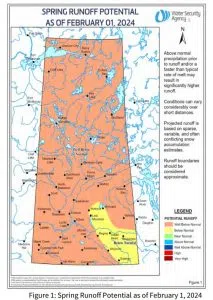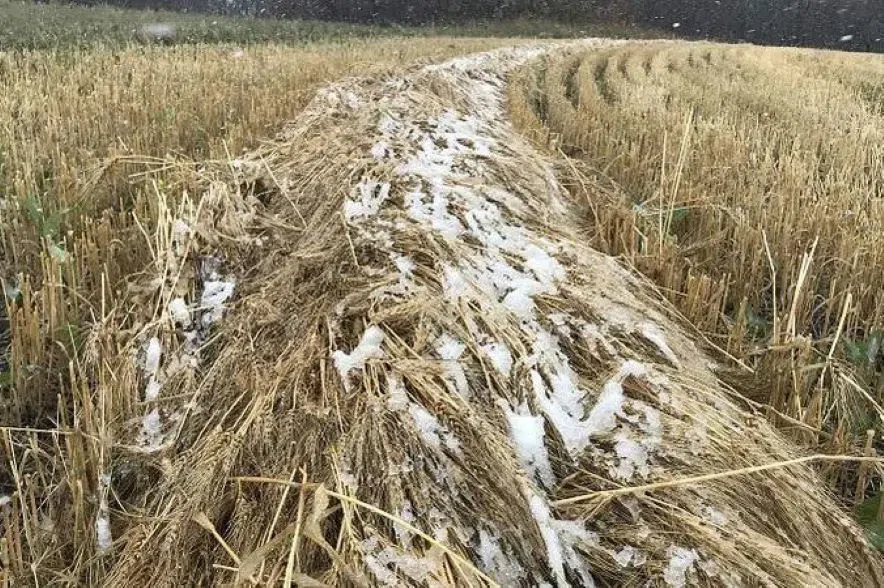Saskatchewan is poised to experience a relatively dry spring, meaning another year of drought-like conditions is possible.
In the preliminary spring runoff report it released Thursday, the Water Security Agency (WSA) said the province will see below-normal to well-below-normal runoff in most areas.
 “Below-average snow conditions, in combination with the generally dry fall conditions, has resulted in a well-below-normal runoff expectation across most of the province,” the report said. “The only exception is the far southeast, where soil conditions were a little better in the fall, and the snowpack is not as depleted as other areas, which has resulted in a below-normal runoff expectation.
“Below-average snow conditions, in combination with the generally dry fall conditions, has resulted in a well-below-normal runoff expectation across most of the province,” the report said. “The only exception is the far southeast, where soil conditions were a little better in the fall, and the snowpack is not as depleted as other areas, which has resulted in a below-normal runoff expectation.
“Snowfall throughout the remainder of the winter, and the melt rate, is expected to have a significant impact on runoff yields. A slow melt will result in most of the snowpack recharging the soil column. A rapid melt is likely needed to result in more runoff to replenish surface water supplies throughout the province.
“Without an above-normal runoff, drought conditions are expected to persist or even worsen this spring across most of the province.”
Producers across the province dealt with a drought in 2023. Many farmers were hoping for a snowy winter to help replenish topsoil moisture levels.
The report included the Canadian Drought Map for Jan. 31, which showed conditions are drier than normal across the province.
“Conditions are driest in the western portion of the grain belt where severe to extreme drought conditions are prevalent,” the report said.
However, the agency pointed out that most water reservoirs in southern Saskatchewan are at normal or above-normal levels heading into the spring. The exceptions are Avonlea and some reservoirs in the southwest.
“In Saskatchewan, we are fortunate to have Lake Diefenbaker and I am glad to see other reservoirs in the province are at near normal levels,” David Marit, the minister responsible for the Water Security Agency, said in a release.
“In anticipation of potential dry summer conditions, a conservative overwinter operating plan focused on retaining water supplies is being implemented for Lake Diefenbaker and other reservoirs across the province.”
The report said that will help users in communities including Moose Jaw, Regina and Saskatoon, as well as industries and producers.
According to the release, the WSA kept water levels at Lake Diefenbaker 3.5 metres higher over the winter to ensure there are water supplies in the event of low mountain runoff. The agency also kept higher winter level at other major reservoirs.
The WSA said long-range forecasts are calling for near-normal precipitation and warmer temperatures than usual across the province from now until April. Areas in the south are expected to see the highest temperature increases.
“Our network of reservoirs and canals combined with our allocation system means we can store water and prioritize to ensure communities have reliable drinking water, while producers and industry receive equitable supply that does not negatively impact our environment,” Marit said.
As well, the WSA noted it’s working with communities to identify their water supply needs and to help create drought preparedness plans.
A full runoff report will be released in March.











